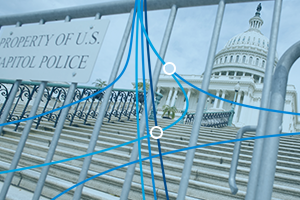
What Transportation Professionals Should Know in the Event of a Government Shutdown | Transportfolio
While most pundits are now predicting the government will remain open past May 6, 2017 (update provided at the bottom of this post), we thought it would be worth a reminder regarding how a government shutdown would impact the transportation industry specifically. Whether a shutdown is a result of the federal budget that needs to be authorized or raising the federal debt ceiling, the political dynamics that caused the 2013 government shutdown could always return.
So what should transportation professionals prepare for? Can we draw any lessons from the 2013 government shutdown? Absolutely. Here are a few things you should think about:
1. Fuel surcharge rates: The biggest disruption for commercial freight in 2013 was that the Energy Information Agency (EIA) was shuttered. That meant the average weekly diesel prices were not published every Monday. Most commercial contracts rely on this to adjust established fuel surcharges. If the federal government shutdown starts on May 6, 2017, then the first missed update would be Monday, May 8, 2017. There are several workarounds to consider if the prices are unpublished:
- Use the April 24, 2017 published rates for a week or two to give politicians time to come up with a solution
- Use a commercially available index
- Agree to backdate or revise billing once the EIA re-opens and provides backdated information (which they did in 2013).
2. Disruptions to FMCSA services: If the government shutdown lasts more than two weeks, some FMCSA services could cause carriers and individual drivers some minor disruptions:
- Getting waivers for medical exemptions
- Registering new truck and motor carriers
- Scheduling safety reviews
- Updating MCS-150 forms
3. Potential delays at Customs: Other critical services like U.S. customs clearance along with meat and agriculture inspections may slow down slightly, but will most likely continue in a close to normal fashion.
4. Impact on government freight: The flow of government related freight may slow or even stop as agencies become reluctant or unable to complete purchase orders due to a lack of funding. This includes freight from the Department of Defense and other government agencies.
5. Federal employee furlough: The 2013 shutdown resulted in 850,000 federal employees being furloughed. This will have an immediate impact on demand for all types of goods, especially in geographic areas that rely heavily on federal jobs—like Washington, DC.
If the government shuts down like it did in 2013, freight will not stop moving. However, a government shutdown will certainly bring some headaches and delays that transportation professionals can and should begin to prepare for now.



